Introduction

The hidden world of hamsters is a fascinating and intricate one, filled with unique behaviors and instincts that are essential to understand in order to provide proper care for these adorable creatures. Recognizing and comprehending their natural instincts is crucial for creating a nurturing environment that caters to their specific needs.
Hamsters belong to various species, each with its own distinct natural habitat. From the Syrian hamsters found in the arid regions of the Middle East to the dwarf hamsters inhabiting grasslands and semi-deserts, these furry critters have adapted to their specific environmental needs over time.
One prominent characteristic of hamsters is their nocturnal nature. These small rodents are most active during the night, utilizing the cover of darkness to explore and engage in various activities. Understanding their nocturnal behavior is essential in providing them with a suitable environment that allows for uninterrupted rest during the day.
Furthermore, hamsters possess a strong instinct to burrow. Digging tunnels and creating cozy nests is an innate behavior that provides them with security and comfort. Additionally, hamsters have a natural tendency to hoard food, storing it in their nests for future consumption.
Hamsters also exhibit territoriality and have a hierarchical social structure within their communities. It is important to understand these instincts to ensure the well-being and harmony of multiple hamsters living together.
Grooming and cleanliness are vital aspects of a hamster's life. They spend a significant amount of time grooming themselves, maintaining their fur's cleanliness and appearance. Providing opportunities for exercise and exploration is also crucial for hamsters' physical and mental well-being.
In conclusion, understanding the hidden world of hamsters and their natural instincts is key to providing them with appropriate care. From their nocturnal nature and burrowing instincts to their food hoarding behavior and social structure, each aspect contributes to their overall well-being. By appreciating these unique behaviors, we can create an environment that promotes their natural instincts and ensures their happiness and health.
Introduction to the hidden world of hamsters

Hamsters, small and furry creatures, have captivated the hearts of many pet owners around the world. But beyond their adorable appearance lies a hidden world of instincts and behaviors that are essential to their survival. Understanding these natural instincts is crucial in providing the best care for our little companions.
In this article, we will delve into the fascinating world of hamsters and explore their unique behaviors. From their species and natural habitats to their nocturnal nature and burrowing instincts, we will unravel the mysteries behind their actions.
One of the key aspects of understanding hamsters is recognizing their individual species and the environments they thrive in. Different species of hamsters have specific needs and preferences, adapting to various natural habitats. By acknowledging these requirements, we can create an environment that mimics their natural surroundings.
Additionally, we will shed light on their nocturnal behavior, as hamsters are primarily active during the night. This knowledge allows us to appreciate their active schedule and provide them with appropriate care during their active hours.
Furthermore, we will explore their innate instinct to burrow and create safe nests. By comprehending their burrowing tendencies, we can ensure they have suitable bedding materials and structures to fulfill this need.
Moreover, we will discuss the intriguing behavior of food hoarding in hamsters. Understanding the reasons behind this behavior helps us provide them with a constant supply of food and ensure they feel secure in their environment.
Territoriality and social structure are also crucial aspects of hamster behavior that we will examine. Recognizing their territorial instincts and hierarchical social structure allows us to create appropriate living spaces for them and prevent conflicts.
Furthermore, we will delve into the importance of grooming for hamsters and how they maintain their cleanliness instinctively. This knowledge helps us provide them with appropriate grooming tools and ensure they are in good health.
Exercise and exploration are vital for hamsters' physical and mental well-being. By recognizing their need for stimulation and providing them with an enriching environment, we can promote their overall health and happiness.
In conclusion, the hidden world of hamsters is a fascinating one, filled with unique instincts and behaviors. By understanding and appreciating these traits, we can provide our furry friends with the care and environment they require to thrive. So let's embark on this journey of discovery and unlock the secrets of the hidden world of hamsters.
Understanding the importance of understanding their natural instincts
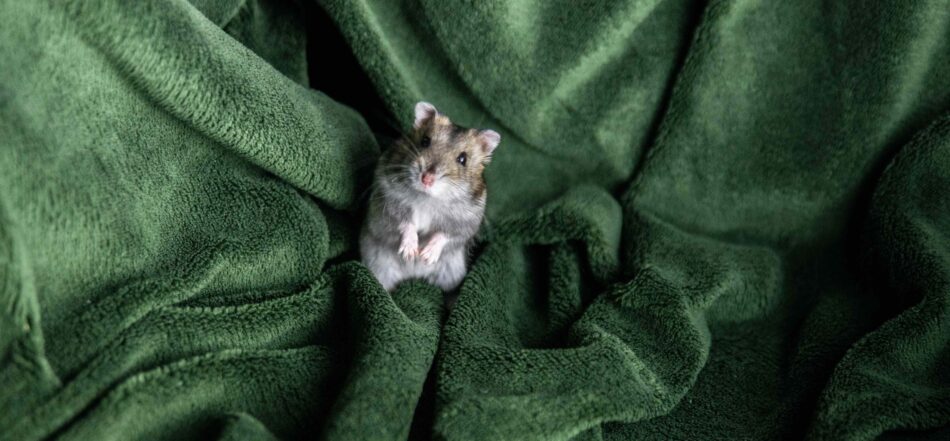
Understanding the natural instincts of hamsters is crucial for providing them with appropriate care and creating an environment that meets their specific needs. By gaining insight into their innate behaviors, hamster owners can ensure the well-being and happiness of these small pets.
One important aspect of understanding their natural instincts is recognizing their species and their natural habitat. Different species of hamsters have different environmental requirements, such as temperature, humidity, and terrain. By adapting the living conditions to match their natural habitat, owners can help hamsters thrive.
Another vital instinct to comprehend is their nocturnal nature. Hamsters are primarily active at night, and it is essential to respect their sleep schedule. Providing them with a quiet and dark environment during the day allows them to get the rest they need.
Understanding hamsters' burrowing and nesting instincts is also vital. Hamsters have a strong desire to dig tunnels and create nests for themselves. Providing them with appropriate bedding materials and hiding spots allows them to exhibit these natural behaviors.
Additionally, recognizing their food hoarding behavior helps owners understand why hamsters stash food in various locations within their cage. This instinct comes from their natural need to store food for times of scarcity.
Understanding hamsters' territoriality and social structure is also crucial for their well-being. Hamsters are solitary animals and prefer to have their own space. It is important to provide them with adequate cage size and separate them if they show signs of aggression.
Grooming and cleanliness are instinctive behaviors for hamsters. These small creatures spend a significant amount of time grooming themselves to maintain good hygiene. Owners should provide dust baths or sand baths to facilitate this behavior.
Hamsters have a strong need for exercise and exploration. They require opportunities to run, climb, and play to keep them physically and mentally stimulated. Providing toys, tunnels, and an exercise wheel in their cage allows them to satisfy this instinctive drive.
In conclusion, understanding the natural instincts of hamsters is essential for their overall well-being. By providing an environment that meets their specific needs and allowing them to exhibit their natural behaviors, owners can ensure that these small pets lead happy and fulfilling lives.
Hamster Species and Natural Habitat

Hamsters are small, furry creatures that belong to the rodent family. There are several different species of hamsters, each with their own unique characteristics and natural habitats. The most common species of hamsters found as pets are Syrian hamsters, dwarf hamsters, and Roborovski hamsters.
Syrian hamsters, also known as golden hamsters, are native to the arid regions of Syria and surrounding areas. They are solitary creatures and prefer to live alone in their burrows. Dwarf hamsters, on the other hand, are found in various parts of Asia, including China, Mongolia, and Russia. They are social animals and can live in groups if provided with sufficient space and resources. Roborovski hamsters come from the deserts of Central Asia and are known for their high energy levels and agility.
Understanding the specific natural habitat of each hamster species is crucial for providing them with appropriate care. Syrian hamsters require larger cages with ample bedding material for burrowing, while dwarf and Roborovski hamsters need smaller enclosures with more accessories for climbing and exploring.
By adapting their habitats to mimic their natural environments, hamster owners can ensure that their pets thrive both physically and mentally.
Different species of hamsters and their natural habitats

Hamsters are fascinating creatures that come in various species, each with their own unique characteristics and natural habitats. One of the most common species is the Syrian hamster, also known as the golden hamster, which hails from the arid regions of Syria and parts of Turkey. These hamsters are solitary by nature and prefer dry, desert-like environments.
Another popular species is the dwarf hamster, which includes several sub-species such as the Campbell's dwarf, Winter White, and Roborovski hamsters. These tiny creatures originate from different parts of Asia, including Russia, China, and Mongolia. They are adapted to colder climates and have a higher tolerance for lower temperatures compared to other hamster species.
The Chinese hamster is another notable species that is native to northern China and Mongolia. These hamsters are skilled climbers and prefer living in rocky terrains and grasslands. They have longer tails compared to other species and are known for their agility and dexterity.
Lastly, the European hamster is found in central and eastern Europe. They inhabit agricultural lands and prefer burrowing in fields and meadows. These hamsters are larger in size and have a more robust build compared to other species.
Understanding the natural habitats of different hamster species is crucial when providing appropriate care and creating a suitable environment for them in captivity. By replicating their natural surroundings as closely as possible, we can ensure that these remarkable creatures thrive in our homes.
Adapting to their specific environmental needs
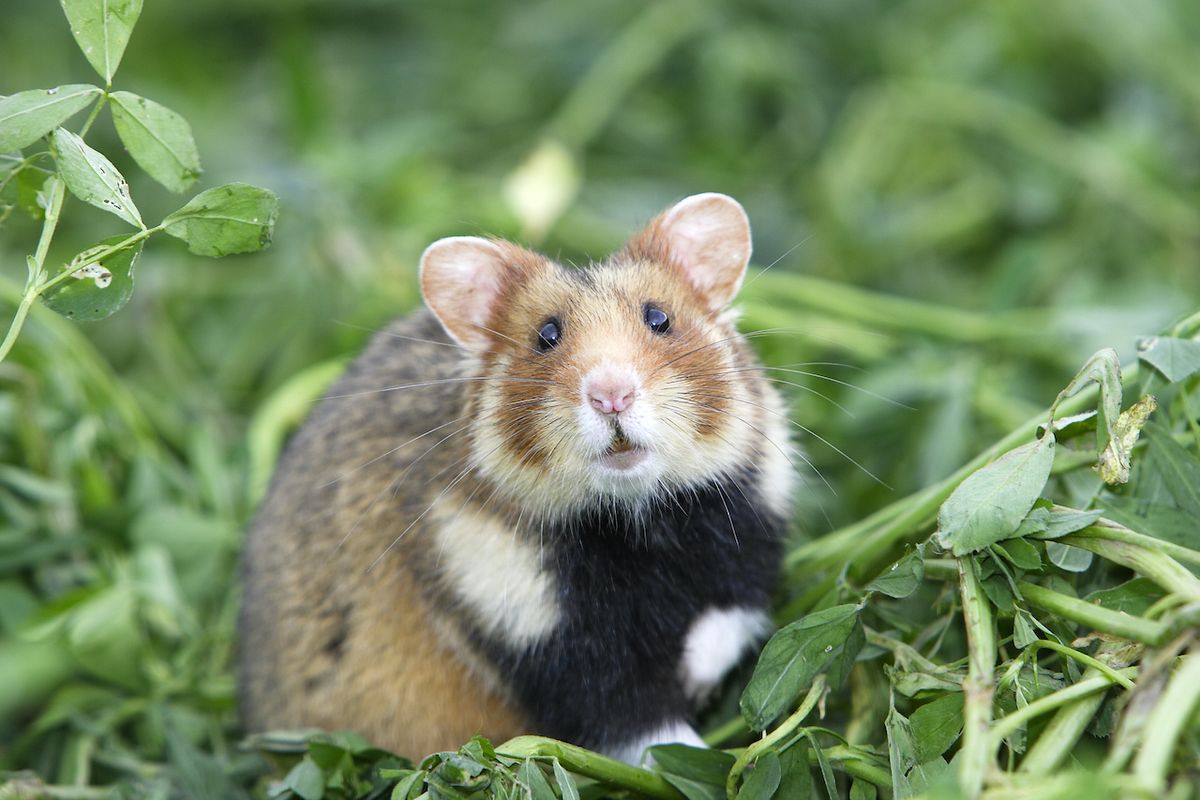
Adapting to their specific environmental needs is crucial for ensuring the well-being of hamsters. These small creatures have different species, each with its own natural habitat requirements. It is essential for hamster owners to understand and provide an environment that mimics their natural habitat as closely as possible.
For instance, Syrian hamsters are solitary animals and require a cage that provides them with enough space to explore and establish their territory. On the other hand, dwarf hamsters are social animals and should ideally be housed in pairs or groups to satisfy their need for companionship.
Temperature and humidity are also important factors to consider. Hamsters are sensitive to extreme temperatures, so it is essential to maintain a comfortable and consistent temperature range in their living space. Additionally, providing them with hiding spots and tunnels allows them to engage in their natural burrowing behavior.
Proper bedding is another vital aspect. Hamsters need a soft and absorbent material, such as wood shavings or paper-based bedding, to create their nests and burrows.
By adapting to the specific environmental needs of hamsters, owners can ensure that these adorable pets thrive in a comfortable and stimulating environment.
Nocturnal Nature of Hamsters
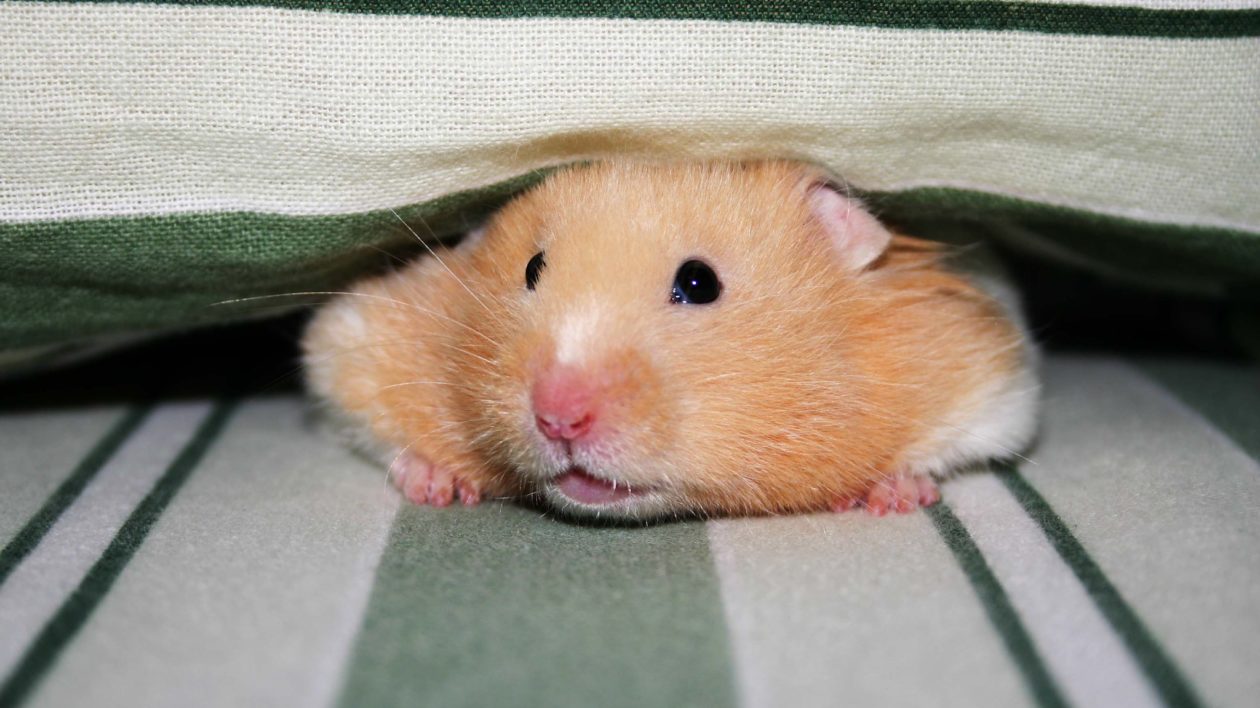
Nocturnal Nature of Hamsters
Hamsters are known for their nocturnal nature, which means they are most active during the night. This behavior is a result of their natural instincts and adaptations to their environment. Understanding their nocturnal behavior is crucial for providing them with appropriate care and ensuring their well-being.
During the night, hamsters become more active, exploring their surroundings, running on their wheels, and engaging in various activities. This behavior is influenced by their natural habitat, where they have evolved to be most active at night when it is cooler and safer from predators.
As nocturnal creatures, hamsters have specialized features that enable them to thrive in the darkness. They have excellent night vision, sensitive hearing, and a heightened sense of smell, allowing them to navigate their environment and locate food sources efficiently.
It is important for hamster owners to understand their pets' nocturnal nature and provide them with a suitable environment. This includes providing a quiet and dark sleeping area during the day and ensuring they have plenty of opportunities for exercise and enrichment during the night.
By respecting and accommodating their natural instincts, hamster owners can ensure that these adorable creatures lead happy and healthy lives.
Understanding hamsters' nocturnal behavior

Hamsters are fascinating creatures with unique behaviors and instincts. One of their most prominent characteristics is their nocturnal nature. Understanding hamsters' nocturnal behavior is crucial for providing them with the appropriate care and environment.
Hamsters are naturally active during the night, which means they sleep during the day and become more active as the sun sets. This behavior is a result of their adaptation to their natural habitat, where they would typically venture out in search of food and explore their surroundings under the cover of darkness.
During the night, hamsters engage in various activities such as running on their wheels, exploring their cages, and foraging for food. It is important to provide them with a suitable environment that allows for these activities. This includes providing them with a running wheel, tunnels, and hiding spots to mimic their natural habitat.
Understanding hamsters' nocturnal behavior also means respecting their need for rest during the day. It is essential to provide them with a quiet and dark sleeping area where they can retreat and get the rest they need to remain healthy and active during the night.
By understanding and accommodating hamsters' nocturnal behavior, we can ensure that they lead happy and fulfilled lives in captivity.
Exploring their active schedule at night
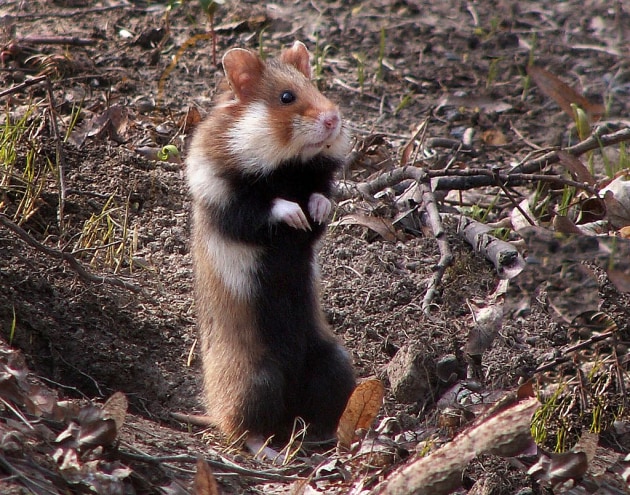
Hamsters are fascinating creatures with unique behaviors, and one of their most noticeable traits is their nocturnal nature. These small rodents are primarily active during the night, which is when they come alive and engage in various activities.
During the night, hamsters exhibit a burst of energy and become highly active. They will scurry around their habitat, run on their exercise wheels, and explore every nook and cranny. This is a result of their natural instincts and evolutionary adaptations to their environment.
The darkness of the night provides a sense of security for hamsters, allowing them to freely roam and fulfill their instinctual behaviors without fear of predators. Their keen sense of hearing and smell helps them navigate their surroundings even in the absence of light.
Observing a hamster's active schedule at night can be an intriguing experience. It is important to provide them with a suitable environment that allows for exploration and physical activity during these hours. Providing them with toys, tunnels, and hiding spots can help stimulate their natural instincts and provide mental and physical enrichment.
Understanding and respecting a hamster's nocturnal behavior is crucial for their overall well-being. Creating a harmonious environment that caters to their natural instincts will ensure they lead a happy and fulfilling life as part of your family.
Burrowing and Nesting Instincts
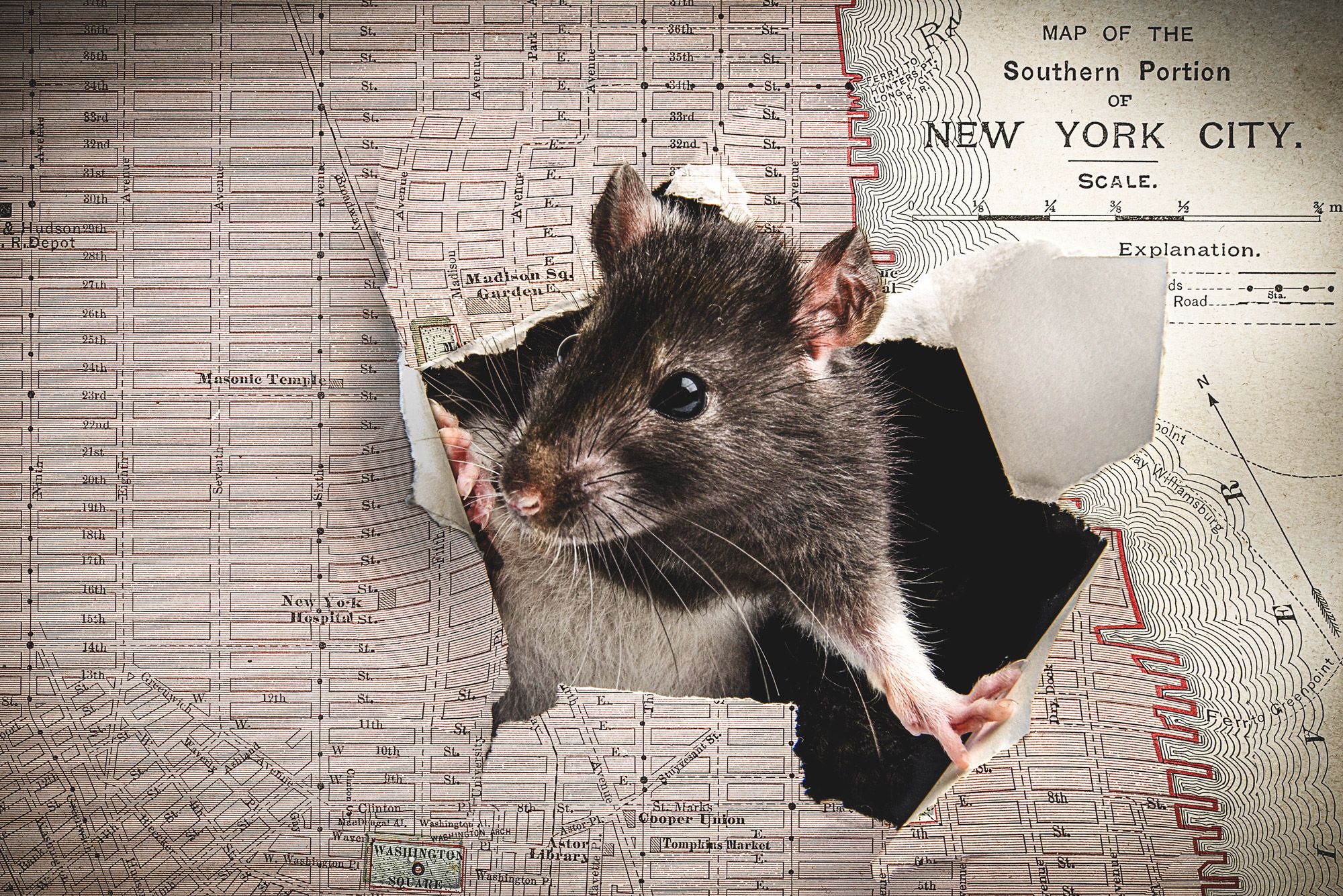
The natural instinct of hamsters to burrow and create nests is a fascinating aspect of their behavior. Hamsters have a strong inclination to dig tunnels and construct elaborate underground homes. This behavior stems from their wild ancestors, who lived in burrows to protect themselves from predators and extreme weather conditions.
Hamsters are equipped with sharp claws and strong front teeth that enable them to efficiently excavate tunnels in various substrates, such as bedding or soil. These burrows serve as a safe and secure retreat where hamsters can rest, sleep, and raise their young.
When it comes to nesting, hamsters exhibit meticulous attention to detail. They gather bedding materials, such as shredded paper or soft fabrics, and create cozy nests within their burrows. Nests provide insulation and comfort, keeping the hamsters warm during colder temperatures.
It is essential for hamster owners to provide appropriate bedding material and an enclosure that allows for burrowing. This enables them to satisfy their natural instincts and promote their overall well-being.
Understanding and accommodating the burrowing and nesting instincts of hamsters is crucial for their physical and mental health. By providing suitable environments that allow for these behaviors, owners can ensure that their furry friends feel secure and content in their surroundings.
The natural instinct of hamsters to burrow

Hamsters have a natural instinct to burrow, which is deeply ingrained in their behavior. Burrowing serves several important purposes for these small rodents. It provides them with a sense of security, allowing them to create a safe and hidden space where they can retreat from potential threats. Burrows also help regulate their body temperature, acting as insulation against extreme weather conditions.
Hamsters are skilled diggers, using their sharp claws and strong forelimbs to excavate tunnels in a variety of substrates. In the wild, they typically burrow in the ground, creating complex networks of tunnels that can extend for several feet. These intricate burrow systems provide them with multiple escape routes and chambers for nesting and storing food.
To satisfy their burrowing instinct in captivity, it's crucial to provide hamsters with appropriate bedding material that allows them to dig and create tunnels. Pine shavings, aspen bedding, or paper-based products are commonly used substrates. It's essential to ensure that the bedding is deep enough to allow for digging and tunneling.
By understanding and catering to their natural instinct to burrow, hamster owners can create a more enriching and comfortable environment for their furry companions. Providing them with the opportunity to engage in this instinctive behavior helps promote their overall well-being and happiness.
Creating a safe and comfortable nest

Creating a safe and comfortable nest is an essential aspect of understanding the natural instincts of hamsters. Hamsters have a strong instinct to burrow, and creating a suitable nesting area is crucial for their overall well-being.
To create a safe and comfortable nest for hamsters, it is important to provide them with suitable bedding material. Soft, non-toxic bedding options such as shredded paper, hay, or aspen shavings are ideal choices. Avoid using cedar or pine shavings as they can be harmful to hamsters' respiratory systems.
Hamsters also appreciate having cozy hiding spots within their nests. Providing them with small tunnels or hideouts made from materials like cardboard or PVC pipes can give them a sense of security.
Regularly cleaning and maintaining the nest is vital to ensure hygiene and prevent the accumulation of waste and parasites. A clean nest will help keep the hamster healthy and comfortable.
By understanding and accommodating their natural instinct to burrow and nest, hamsters can thrive in their environment. Creating a safe and comfortable nest allows them to exhibit their natural behaviors while providing a secure and cozy space for them to rest and sleep.
Food Hoarding Behavior

Hamsters have a fascinating natural instinct to hoard food. This behavior stems from their wild ancestors' need to store food for survival during times of scarcity. Hamsters are known for their impressive ability to gather and store food in various locations within their habitat. They use their cheek pouches, which can expand to almost double the size of their head, to carry food back to their burrows.
The food hoarding behavior of hamsters serves multiple purposes. Firstly, it helps ensure a constant food supply, especially during periods when food might be scarce. By storing food, hamsters are able to sustain themselves during times when they may not have access to fresh resources. Additionally, hoarding allows them to establish a sense of security and control over their environment.
Hamsters have an innate ability to remember the location of their food stores, even when they are hidden away. This remarkable memory ensures that they can retrieve their stored food when needed. It is important for hamster owners to understand and respect this natural instinct by providing appropriate opportunities for hoarding in their pet's habitat.
By observing and understanding the food hoarding behavior of hamsters, owners can better appreciate and accommodate their pet's natural instincts. Providing a variety of food options and suitable storage areas can help replicate the stimulating environment that hamsters would experience in the wild.
Exploring the natural tendency of hamsters to hoard food

Hamsters have a natural tendency to hoard food, which is an instinct that stems from their wild ancestors. This behavior can be observed in various species of hamsters, including Syrian hamsters and dwarf hamsters. Hamsters instinctively collect and store food in their burrows or nests, ensuring a constant supply for times when food may be scarce in the wild.
The hoarding behavior of hamsters is driven by their innate survival instincts. They are opportunistic feeders, meaning they take advantage of any available resources. In the wild, hamsters gather food such as seeds, nuts, and grains, which they stash away for later consumption. This hoarding behavior allows them to have a backup food supply during periods of scarcity or hibernation.
Hamsters exhibit meticulous behavior when it comes to hoarding food. They meticulously carry each food item in their cheek pouches and then carefully hide it in various locations within their burrows or nests. These hidden food caches serve as a safety net for hamsters, ensuring they have sustenance even when food sources are limited.
As pet owners, it's important to understand and accommodate this natural instinct of hamsters to hoard food. Providing them with appropriate food storage options, such as small containers or feeding stations, can help simulate their natural behavior. Additionally, regularly checking and replenishing their food stash will ensure they always have access to fresh and nutritious meals.
By acknowledging and respecting the natural tendency of hamsters to hoard food, we can provide them with a comfortable and fulfilling living environment that supports their instinctual behaviors.
Understanding the reasons behind this behavior

Hamsters are known for their innate behavior of hoarding food. This behavior can be traced back to their natural instincts and survival strategies in the wild. Understanding the reasons behind this behavior can help hamster owners provide the best care for their furry friends.
One primary reason hamsters hoard food is to ensure a steady supply of nourishment. In their natural habitat, food availability is not always consistent. By hoarding food, hamsters can store enough resources to sustain themselves during periods of scarcity. This behavior also helps them prepare for hibernation or times when they may not have access to food.
Additionally, hoarding food gives hamsters a sense of security. In the wild, they face competition from other animals for limited resources. By storing food in various locations, hamsters can protect their stash from potential theft and maintain control over their territory.
Another reason for this behavior is the instinct to gather and store items for nesting purposes. Hamsters use the food they hoard to create cozy nests where they feel safe and comfortable. This behavior is driven by their natural inclination to burrow and create a secure environment.
Understanding the reasons behind hamsters' food hoarding behavior is crucial for providing the right care. Owners should ensure a constant supply of fresh food and regularly clean out any uneaten or spoiled items from their pet's habitat. By mimicking their natural instincts, owners can support their hamster's well-being and promote a happy and healthy life.
Territoriality and Social Structure

Territoriality and Social Structure
Hamsters are known for their territorial instincts and hierarchical social structure. In their natural habitats, hamsters establish territories that they fiercely defend against intruders. This territorial behavior is rooted in their instinct to protect their resources and ensure their survival.
Within their social structure, hamsters establish dominance hierarchies. This means that there is a clear pecking order among hamsters in a group, with one dominant individual and others subordinate to it. This hierarchy is established through displays of dominance, such as chasing, mounting, and aggressive behaviors.
Understanding the territoriality and social structure of hamsters is crucial for providing appropriate care. It is important to provide each hamster with enough space to establish its territory and avoid overcrowding, which can lead to stress and aggression. Additionally, introducing new hamsters should be done gradually and with caution to prevent conflicts.
By recognizing and respecting the territoriality and social structure of hamsters, owners can create a harmonious environment that promotes the well-being of these fascinating creatures.
Understanding hamsters' territorial instincts
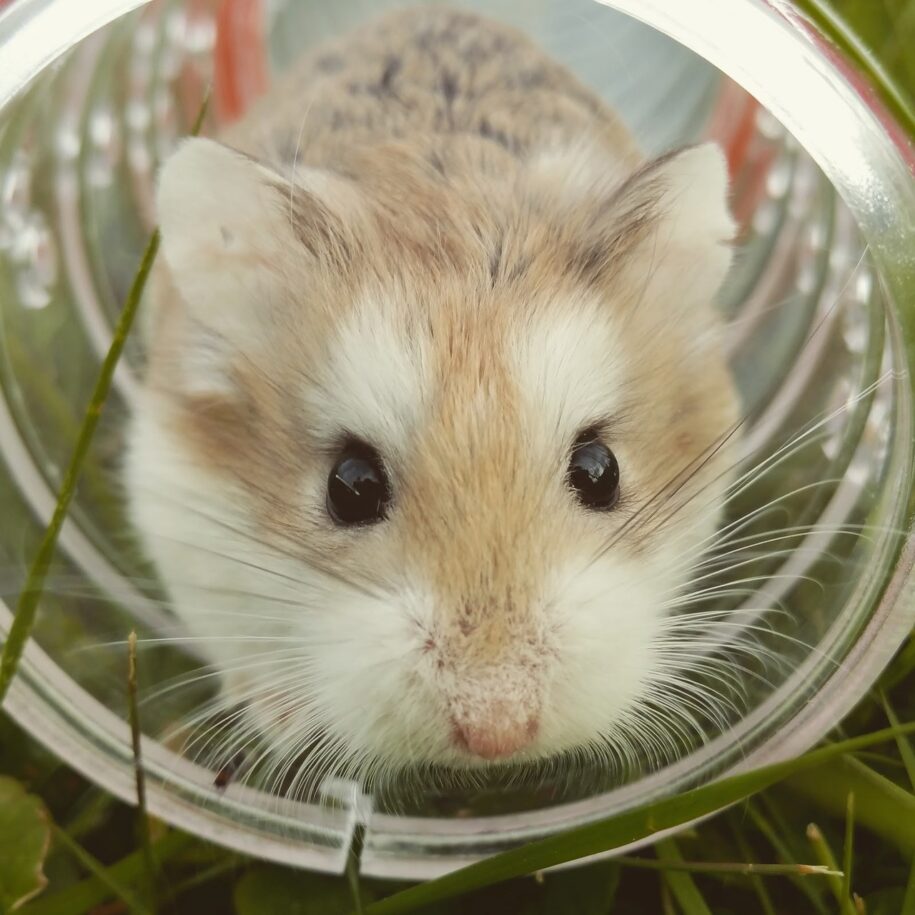
Hamsters are known for their territorial instincts, which play a crucial role in their natural behavior. These small creatures have a strong need to establish and defend their own space, creating a sense of security and ownership within their environment.
Hamsters mark their territory in various ways, including scent marking and vocalization. They use scent glands located on their body to leave their unique scent on objects and surfaces, effectively claiming them as their own. This serves as a warning to other hamsters that the area is already occupied.
In addition to scent marking, hamsters may also exhibit aggressive behavior towards intruders in their territory. This can include chasing, biting, or even fighting to defend their space. It is important for hamster owners to understand this instinctive behavior and provide appropriate housing and space for each hamster in a multi-hamster household.
By understanding and respecting their territorial instincts, hamster owners can create a harmonious environment for their pets. Providing separate living spaces and ensuring each hamster has enough room to establish their own territory can help prevent conflicts and promote a peaceful coexistence.
Overall, hamsters' territorial instincts are an essential part of their natural behavior. By acknowledging and accommodating these instincts, we can ensure that our furry friends feel safe and secure in their homes.
Exploring their hierarchical social structure

Hamsters, despite their small size, have a complex social structure that is characterized by a hierarchical system. This means that within a group of hamsters, there is a clear ranking order, with dominant individuals at the top and subordinate ones at the bottom.
In this hierarchical social structure, dominant hamsters assert their authority by displaying aggressive behavior towards subordinates. This can include chasing, biting, or even vocalizing to establish their dominance. Subordinate hamsters, on the other hand, exhibit submissive behaviors such as crouching or fleeing when confronted by a dominant individual.
The hierarchy is typically established through a series of confrontations and interactions among hamsters, with each individual finding their place within the group. The dominant hamster will have priority access to resources such as food and shelter, while subordinate hamsters may have to wait their turn or settle for less favorable options.
It is important for hamster owners to understand this social structure in order to provide a suitable environment for their pets. This includes ensuring that there is enough space and resources for each hamster in a multi-hamster habitat, as well as monitoring interactions to prevent excessive aggression.
By recognizing and respecting the hierarchical social structure of hamsters, owners can help create a harmonious living environment for their furry friends.
Grooming and Cleanliness

Grooming and cleanliness are essential aspects of a hamster's natural instincts. These small creatures have a strong inclination towards keeping themselves clean and well-groomed. They possess the ability to groom themselves meticulously, using their paws and tongues to remove dirt and maintain their fur's cleanliness.
Hamsters devote a significant amount of time to grooming, ensuring that their fur remains in optimal condition. They lick their bodies, combing through their fur with their tongues to remove any tangles or debris. Grooming not only helps hamsters maintain a clean and healthy coat but also allows them to distribute natural oils throughout their fur, keeping it shiny and soft.
In addition to self-grooming, hamsters also engage in social grooming. When housed together, hamsters will groom each other as a way of bonding and establishing social bonds within their group.
To support a hamster's grooming instincts, it is important to provide them with a clean environment. Regularly cleaning their cage, removing any soiled bedding, and providing fresh water are crucial for maintaining their hygiene.
By understanding and appreciating a hamster's instinctive need for grooming and cleanliness, owners can ensure they provide an environment that supports these behaviors. This will contribute to the overall health and well-being of their furry companions.
The importance of grooming for hamsters

Grooming plays a crucial role in the lives of hamsters, ensuring their overall well-being and health. Hamsters are meticulous groomers, spending a significant amount of time each day cleaning themselves. They use their paws and tongues to meticulously groom their fur, removing dirt, debris, and excess oils.
The importance of grooming for hamsters cannot be understated. It helps them maintain a clean and healthy coat, preventing matting and tangling. Regular grooming also promotes good circulation and stimulates oil production in their skin, keeping it moisturized and preventing dryness.
In addition to promoting physical health, grooming is also a vital part of a hamster's mental well-being. It is a self-soothing behavior that helps them relieve stress and anxiety. Grooming provides a sense of comfort and security, allowing them to feel safe in their environment.
As responsible hamster owners, it is essential to provide a hygienic living space for our furry friends. Regularly cleaning their cage or enclosure will help minimize the buildup of dirt and bacteria, ensuring a healthy environment for them to thrive in.
By understanding the importance of grooming for hamsters and providing them with opportunities to engage in this natural behavior, we can contribute to their overall happiness and well-being.
Exploring their instinctive cleanliness

Hamsters are known for their instinctive cleanliness, which plays a vital role in their overall well-being. These tiny creatures have a natural tendency to keep themselves clean and groomed. They meticulously groom their fur using their paws and teeth, ensuring that it remains free from dirt and parasites.
Their grooming routine also helps in distributing natural oils throughout their fur, keeping it healthy and shiny. This behavior not only helps them maintain their appearance but also serves as a form of self-care.
In addition to grooming themselves, hamsters also exhibit cleanliness in their living environment. They have a natural instinct to keep their burrows and nests tidy. They will often rearrange bedding materials and remove any waste or debris that may accumulate.
As responsible pet owners, it is crucial to provide a clean and hygienic living space for our hamsters. Regularly cleaning their habitat, providing fresh bedding, and ensuring a constant supply of clean water are essential for their well-being.
By understanding and appreciating the instinctive cleanliness of hamsters, we can ensure that they thrive in a healthy and comfortable environment.
Exercise and Exploration
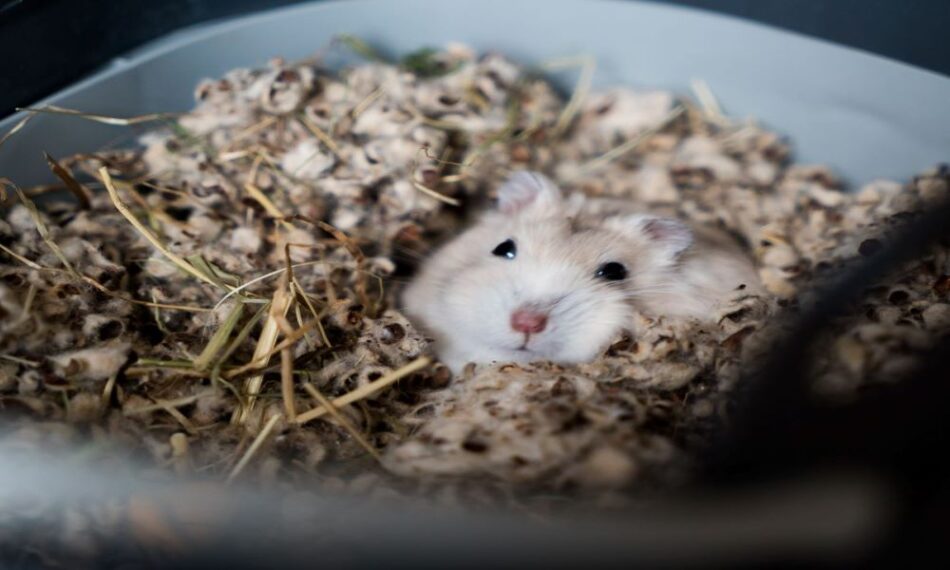
Hamsters are naturally active creatures that require regular exercise and opportunities for exploration. Exercise is essential for their physical health and mental stimulation. Hamsters have a strong instinct to run and explore their surroundings, so providing them with an appropriate environment is crucial.
Hamsters need a large enough cage or enclosure to allow for movement and exercise. A wheel or exercise ball is also beneficial, as it allows them to engage in their natural running behavior. It's important to choose the right size wheel or ball to ensure the hamster can run comfortably without any risk of injury.
In addition to exercise, hamsters also enjoy exploring their surroundings. They have a curious nature and love to investigate new objects or areas within their habitat. Providing them with tunnels, hiding spots, and toys can encourage their natural exploratory instincts.
It's essential for owners to regularly interact with their hamsters during playtime. This not only helps strengthen the bond between the pet and owner but also provides additional mental stimulation and exercise opportunities.
By understanding the importance of exercise and exploration for hamsters, owners can create a stimulating environment that promotes their overall well-being and happiness.
Hamsters' need for exercise and exploration

Hamsters are naturally active creatures that require regular exercise and opportunities for exploration. Their need for physical activity is essential for both their physical and mental well-being. Regular exercise helps to prevent obesity, maintain a healthy weight, and promote cardiovascular health in hamsters.
In the wild, hamsters have vast territories to explore, burrows to dig, and obstacles to overcome. However, in captivity, they rely on their owners to provide them with an environment that encourages exercise and exploration. It is crucial to provide your hamster with a spacious cage that includes tunnels, ramps, and platforms for climbing. This will allow them to engage in their natural behaviors such as running, jumping, and climbing.
In addition to a stimulating cage setup, owners should also provide toys and interactive activities to keep their hamsters mentally stimulated. These can include puzzle toys, tunnels, exercise wheels, and even supervised playtime outside of the cage. It's important to ensure the area is safe and escape-proof when allowing your hamster to explore outside of their enclosure.
By meeting their need for exercise and exploration, you are not only promoting their overall health but also providing them with an enriched and fulfilling life. Remember to always monitor your hamster during playtime and provide them with a safe and stimulating environment to satisfy their natural instincts.
Providing a stimulating environment for physical activity

To ensure that hamsters stay happy and healthy, it is important to provide them with a stimulating environment for physical activity. Hamsters are naturally active creatures and require regular exercise to maintain their physical well-being.
One way to encourage physical activity is by providing a hamster wheel or exercise ball. These allow hamsters to run freely and engage in their instinctual behavior of running long distances. It is crucial to choose the appropriate size of the wheel or ball based on the specific species and size of the hamster. This will prevent any discomfort or injury.
In addition to the wheel or ball, it is essential to create a habitat that offers opportunities for exploration. Adding tunnels, bridges, and climbing structures can encourage hamsters to navigate their environment and engage in natural behaviors such as climbing and exploring.
Furthermore, rotating toys and introducing new objects regularly can keep hamsters mentally stimulated and prevent boredom. This can include items such as chew toys, tunnels, and puzzle toys that require problem-solving skills.
By providing a stimulating environment for physical activity, hamsters can fulfill their natural instincts while also promoting their overall well-being. It is important for hamster owners to observe their pet's behavior and adjust the environment accordingly to ensure they are getting enough exercise and mental stimulation.
Conclusion

The hidden world of hamsters is a fascinating one, filled with unique behaviors and natural instincts. Understanding these instincts is crucial for providing appropriate care and ensuring the well-being of these beloved pets.
Different species of hamsters have specific natural habitats that need to be taken into consideration. From the desert-dwelling Syrian hamster to the grasslands-loving Campbell's dwarf hamster, each species has its own environmental needs that must be met.
Hamsters are nocturnal creatures, meaning they are most active during the night. This behavior should be understood and accommodated by providing a suitable environment for their nighttime activities.
Burrowing and nesting instincts are deeply ingrained in hamsters. Creating a safe and comfortable space for them to burrow and build nests is essential for their physical and mental well-being.
Food hoarding is another natural behavior exhibited by hamsters. Understanding the reasons behind this behavior and providing appropriate feeding methods can help ensure their nutritional needs are met.
Hamsters are territorial animals with a hierarchical social structure. Recognizing their need for personal space and providing opportunities for social interaction can contribute to their overall happiness.
Grooming and cleanliness are vital aspects of a hamster's life. Regular grooming helps them maintain their health, while their instinctive cleanliness ensures a hygienic living environment.
Exercise and exploration are essential for hamsters' physical and mental stimulation. Providing them with a stimulating environment that encourages activity and exploration is crucial for their overall well-being.
In conclusion, understanding and appreciating the natural instincts of hamsters allows us to provide them with the care they need. By creating an environment that meets their specific needs, we can ensure they live happy and fulfilling lives as cherished pets.
Summarizing the natural instincts of hamsters

Summarizing the natural instincts of hamsters, it becomes evident that these small creatures possess a range of unique behaviors that are essential to their survival and well-being. Hamsters have an innate ability to adapt to their specific environmental needs, which vary depending on their species and natural habitat. They are predominantly nocturnal, displaying heightened activity during the night when they engage in exploring, foraging, and socializing. Burrowing is another instinctive behavior exhibited by hamsters, as they create safe and comfortable nests underground. Additionally, hamsters have a natural tendency to hoard food, ensuring a stash for times of scarcity. Their territorial instincts contribute to a hierarchical social structure, with each hamster claiming its own space within the habitat. Grooming is crucial for hamsters to maintain hygiene and health, while exercise and exploration fulfill their need for physical stimulation. By understanding these natural instincts, hamster owners can provide appropriate care and create a stimulating environment that promotes their well-being and happiness.
Appreciating their unique behaviors and providing appropriate care

Appreciating the unique behaviors of hamsters is crucial in providing them with appropriate care. Understanding their natural instincts allows us to create an environment that caters to their specific needs.
Hamsters are known for their burrowing and nesting instincts. Providing them with materials such as bedding and tunnels allows them to engage in these behaviors, which helps them feel safe and secure. Additionally, their food hoarding behavior should be acknowledged by offering them a variety of food options and ensuring they have enough storage space.
Territoriality and social structure also play a significant role in hamster care. It is important to provide each hamster with its own space to avoid conflicts. Furthermore, grooming and cleanliness are essential for their well-being. Regularly providing them with sand baths or dust baths helps maintain their hygiene.
Exercise and exploration are vital aspects of hamster care as well. By offering them toys, tunnels, and exercise wheels, we can encourage their natural instincts for physical activity.
In conclusion, appreciating the unique behaviors of hamsters is essential for their overall well-being. By understanding their natural instincts and providing appropriate care, we can ensure that they lead happy and fulfilling lives.




0 Comments